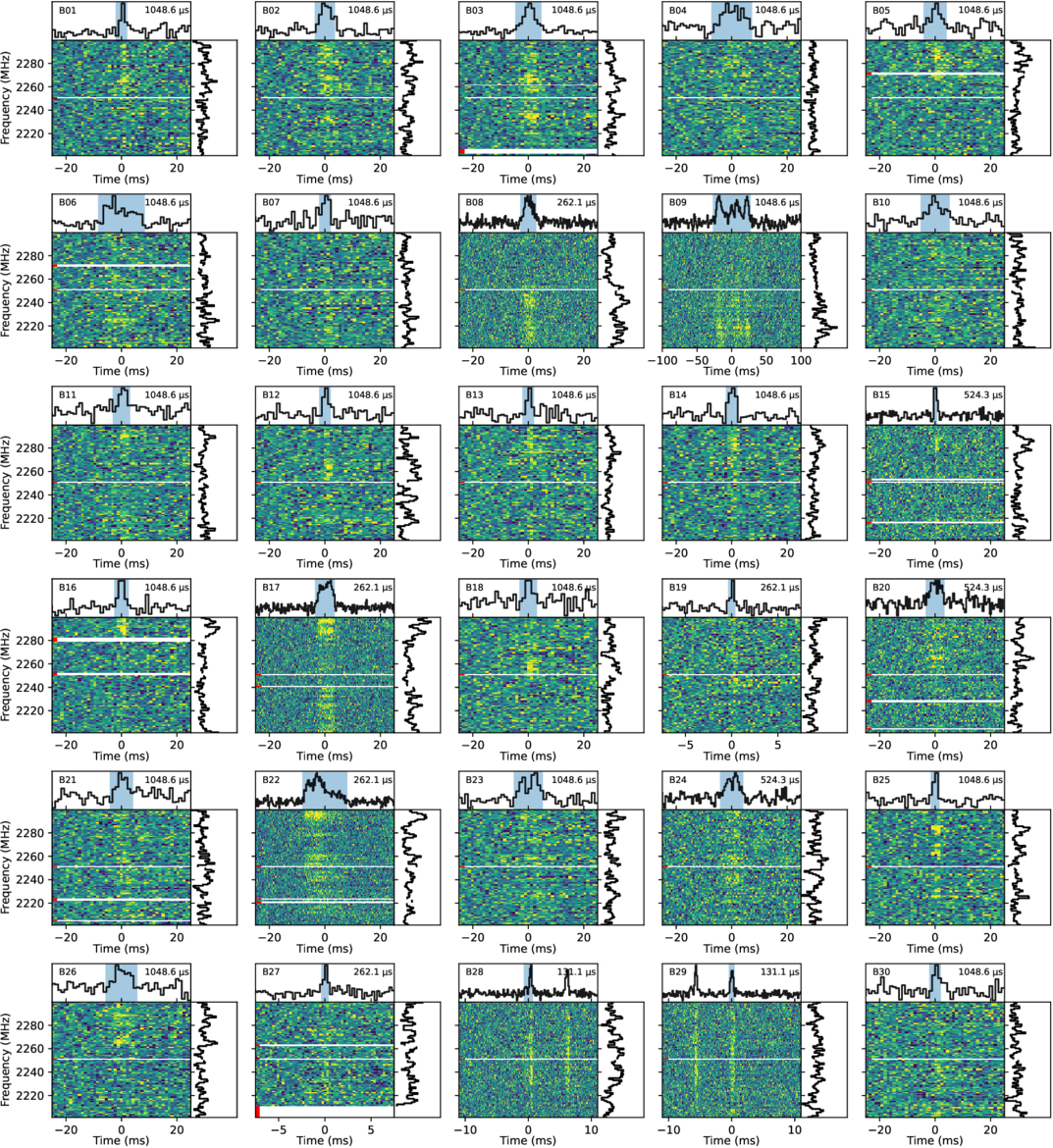
Using the Tianma Radio Telescope (TMRT), researchers from the Shanghai Astronomical Observatory (SHAO) of the Chinese Academy of Sciences conducted 66 simultaneous dual‑frequency (2.25 GHz/8.60 GHz) observations of the fast radio burst FRB 20240114A over one year and detected 155 bursts at 2.25 GHz, building the largest long-term high-frequency (above 2.0 GHz) monitoring database for this target to date.
Their findings were published in The Astrophysical Journal on October 14.
Fast radio bursts (FRBs) are a class of extremely bright, millisecond‑scale radio "flashes" in the universe. To date, over 4,000 FRBs have been discovered, with the vast majority exhibiting a single burst and only about 100 showing repeated bursts. FRB 20240114A, a newly discovered repeater, was identified in 2024. Most published observations of this source have come from frequencies at or below 1.4 GHz, with limited high-frequency detections reported from the Effelsberg 100-meter Radio Telescope in Germany.
Following the announcement of FRB 20240114A's discovery, the TMRT team at SHAO swiftly organized a discussion. They initiated simultaneous dual-frequency (2.25 GHz/8.60 GHz) observations of the burst using the telescope's "one dish, two frequencies" capability.
From January 29, 2024, to February 15, 2025, they conducted a total of 66 observations, amounting to approximately 180 hours of cumulative observation time. After careful data reduction, the team confirmed 155 bursts from FRB 20240114A at 2.25 GHz.
Further analysis of the evolution of the burst rate over time revealed that the source was unusually active at 2.25 GHz in July 2024 and early January 2025, with burst rates nearly ten times higher than the average for other observation periods.
Although no bursts were detected at 8.60 GHz, the researchers concluded that the activity of FRB 20240114A at that frequency is one to two orders of magnitude lower than at 2.25 GHz. This finding is consistent with the narrowband intrinsic radiation properties observed in other repeating FRBs.
The results also show that the "preferred frequency" of FRB 20240114A bursts is not constant. In early 2024, its activity decreased as the observing frequency increased. However, from May to July 2024, a pronounced activity peak appeared around 2–3 GHz, indicating that the frequency dependence of its activity evolves over time. These changes may reflect the evolution of the surrounding environment of the burst, such as synchrotron self-absorption suppressing low-frequency bursts or extreme scattering events during signal propagation modulating the observed burst rate at particular frequencies, among other possibilities.

Representative bursts of FRB 20240114A detected by TMRT. In each subplot the dynamic spectrum is shown in the centre, with the time‑domain profile above and the frequency‑domain profile on the right. (Image by SHAO)

Burst rate of FRB 20240114A as a function of observing frequency during 2024 January‑February (blue) and May‑July (red). All observations from different telescopes have been scaled to TMRT's detection threshold, showing a clear change in the frequency‑dependence of the source's burst rate between the two periods. (Image by SHAO)

86-10-68597521 (day)
86-10-68597289 (night)

52 Sanlihe Rd., Xicheng District,
Beijing, China (100864)

